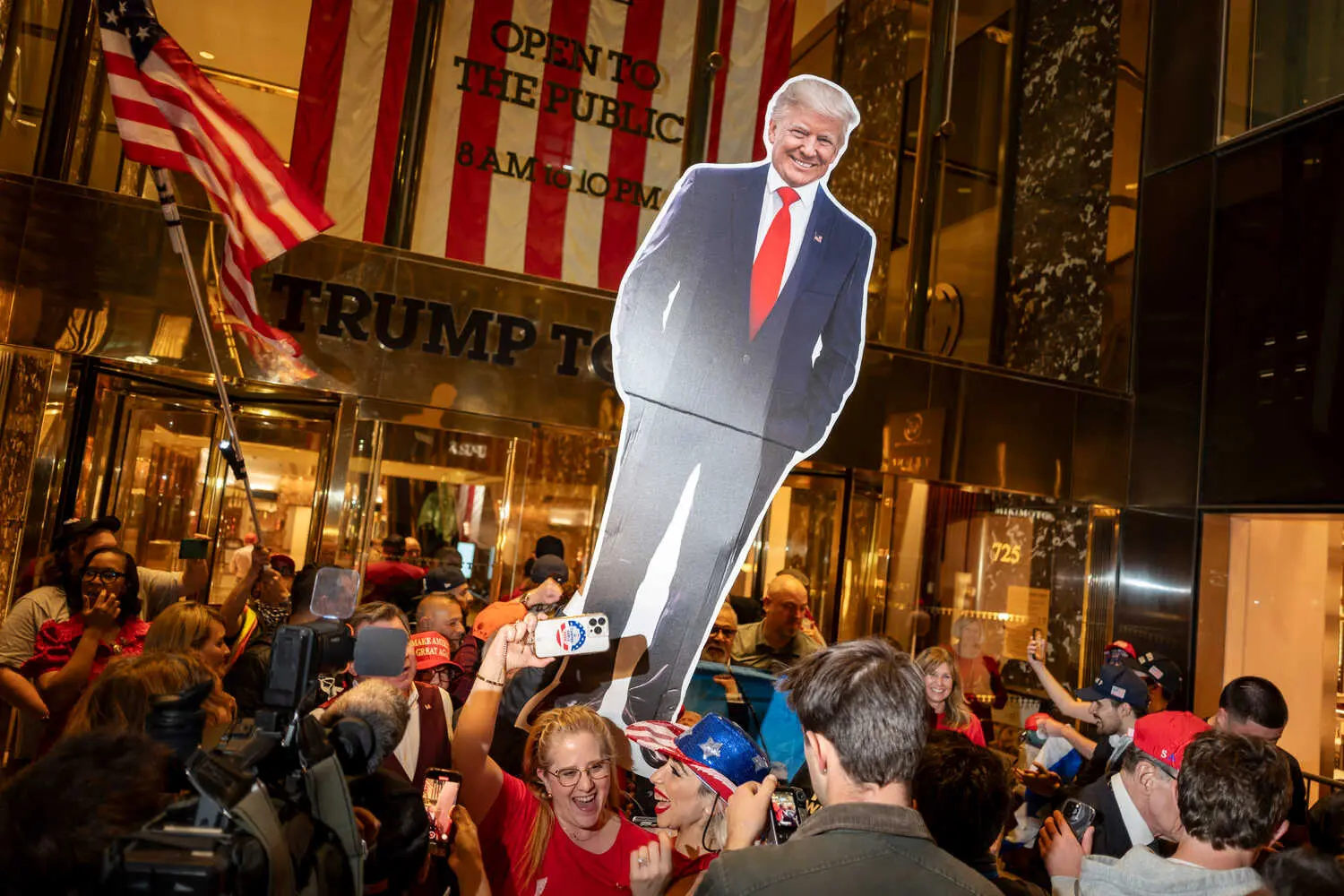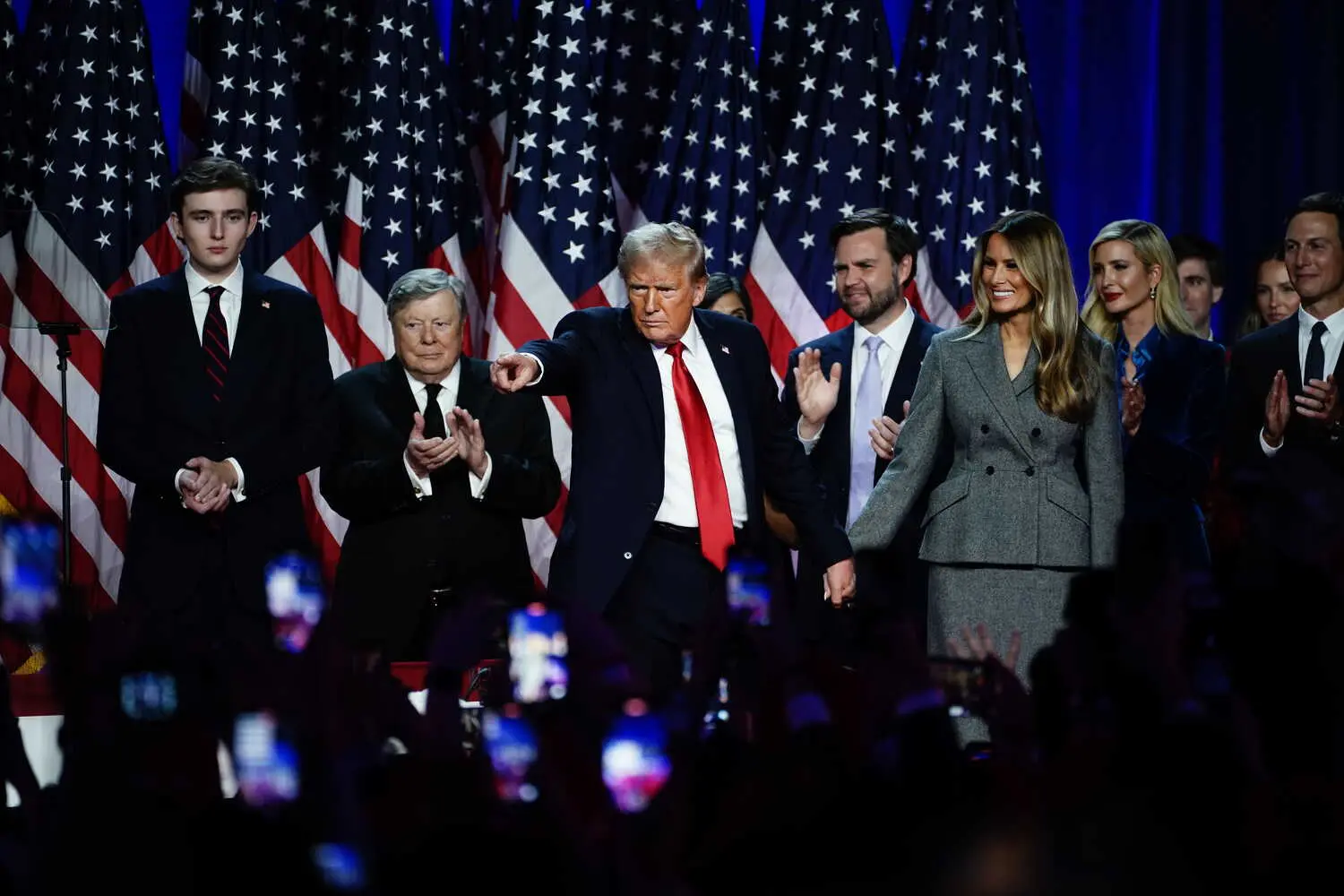America’s Choice 2024: Electing President Donald Trump

Part 1: Setting the Stage
The United States has just witnessed what many call the greatest political comeback in American history. Donald Trump will return to the White House after winning 315 electoral votes and defeating Vice President Kamala Harris in an election that broke turnout records and defied conventional wisdom. While the Constitution outlines the election framework for federal officials, the administration and regulation of most election aspects fall under state jurisdiction rather than that of the federal government.
The Presidential Election Process

The presidential election process in the United States is a complex and multi-step journey that involves several key stages. It all begins with the nomination of candidates by the major political parties, followed by the primary elections and caucuses, and culminates in the general election. This process is governed by federal laws and regulations and is overseen by the Federal Election Commission.
Typically, the presidential election process kicks off about 18 months before Election Day. During this initial stage, candidates from the major political parties, including the Democratic Party and the Republican Party, vie for their party’s nomination. This involves a series of primary elections and caucuses held in each state, where voters cast ballots to select delegates who will represent them at the national convention.
The national convention is a pivotal event where the party’s presidential candidate is officially nominated. Following the conventions, the general election is held on the first Tuesday after the first Monday in November. This final stage of the presidential election process determines who will become the next President of the United States.
Presidential Candidates and Eligibility

To be eligible to run for president, a candidate must meet specific constitutional requirements. According to Article II, Section 1 of the United States Constitution, a presidential candidate must be a natural-born citizen of the United States, at least 35 years old, and a resident of the United States for at least 14 years.
Beyond these constitutional requirements, presidential candidates must also comply with various federal and state laws and regulations. For instance, they must file a Statement of Candidacy with the Federal Election Commission and disclose their financial information.
Presidential candidates come from diverse backgrounds, including politics, business, and the military. Some have extensive experience in government, while others may be newcomers to the political arena. Regardless of their background, all presidential candidates must meet the constitutional requirements and adhere to federal and state laws and regulations.
The Electoral College System

The Electoral College system is a unique feature of the presidential election process in the United States. Under this system, each state is allocated a certain number of electoral votes based on its population. The candidate who wins the most votes in a state typically receives all of that state’s electoral votes, except Maine and Nebraska, which allocate their electoral votes proportionally.
Established by the Founding Fathers, the Electoral College system was designed to balance the interests of small and large states. It ensures that smaller states have a voice in the presidential election process and that candidates must campaign nationwide rather than just focusing on heavily populated areas.
The Electoral College system has been controversial and debated over the years. Some argue that it is undemocratic, while others believe it is a crucial part of American democracy. Regardless of opinion, the Electoral College remains an integral component of the presidential election process in the United States.
The Electoral Votes Tell a Story
- Electoral Victory: 315 electoral votes
- Popular Vote: 51.3% Trump, 47.2% Harris
- Voter Turnout: 68% of eligible voters
- Key States: Pennsylvania (+3.2%), Wisconsin (+2.8%), Georgia (+4.1%)
Trump was elected president with 315 electoral votes.
Why This Presidential Election Was Different
Unlike any previous election, Americans chose a candidate facing:
- 34 felony charges
- Multiple investigations
- January 6th aftermath
- Two impeachments
Additionally, electors are pledged to vote for the president and vice president candidates from the same political party.
Part 2: Why Americans Made This Choice
Economic Reality
Many voters focused on their wallets:
- Grocery prices up 12% from 2023
- Average rent increased 15%
- Gas prices fluctuating
- Housing costs at record highs
“I don’t agree with everything Trump does,” says Mike Thompson, an Ohio factory worker, “but I can’t afford groceries like I used to.”
Immigration Concerns
Border statistics influenced voters:
- Record border crossings in 2024
- Overcrowded processing centers
- The strain on local resources
- Public safety debates
Major Political Parties’ Struggles
The Harris campaign faced challenges as a political party:
- Late replacement of Biden
- Messaging difficulties
- Campaign organization issues
- Failure to connect with working class
Part 3: The Legal Questions
Understanding the Charges
Trump faces unprecedented legal challenges:
- 34 felony counts in New York
- Georgia election interference case
- Federal January 6th charges
- Classified documents case
What Happens Now?
Legal experts explain the situation:
- Cases likely paused during the presidency
- Constitutional questions remain
- Supreme Court may need to decide
- No historical precedent exists
Part 4: The Role of the Vice President
The United States Vice President plays a crucial role in the presidential election process. As the running mate of the presidential candidate, the Vice President is elected alongside the President.
The Vice President has several key responsibilities, including serving as President of the Senate, casting tie-breaking votes in the Senate, and advising the President on critical issues. Additionally, the Vice President assumes the President’s office if the President cannot serve due to death, resignation, or incapacitation.
In recent years, the role of the Vice President has become increasingly significant. Vice Presidents now play a vital role in advising the President, representing the administration in public, and campaigning on behalf of the President and the party. They also help build support for the administration’s policies.
The Vice President is an essential part of the presidential election process and a critical member of the administration’s team.
Part 4: What Historical Figures Might Say
George Washington Might Say:
“Political parties becoming too powerful was my greatest fear. This division is exactly what I warned about in my farewell address.”
Abraham Lincoln Might Reflect:
“A house divided against itself cannot stand. The challenge now is not North versus South, but neighbor versus neighbor.”
Martin Luther King Jr. Might Observe:
“The ultimate measure of a person is not where they stand in moments of comfort and convenience, but where they stand at times of challenge and controversy.”
Part 5: Voices from All Sides
Trump Supporters:
Maria Rodriguez, Small Business Owner: “My business struggled under COVID. Trump understands business owners need the freedom to operate.”
Harris Supporters:
James Wilson, Teacher: “I’m worried about our democratic institutions and the message this sends to our children.”
Independent Voters:
Sarah Chen, Software Engineer: “Neither side is perfect. I chose what I thought would bring most stability to my industry.”
Part 6: Looking Forward
First 100 Days Expectations
- Major immigration policy changes
- Economic policy shifts
- Executive order wave
- Cabinet appointments
International Impact
- NATO relationship changes
- Russia-Ukraine policy shifts
- China trade dynamics
- Middle East alignments
Part 7: Economic Outlook
Markets React
- Stock market surge post-election
- Dollar strengthening
- Trade policy uncertainty
- Energy sector gains
Job Market Predictions
- Manufacturing focus
- Trade policy impact
- Immigration effects
- Small business outlook
Part 8: Unity Possibilities
Finding Common Ground
Americans agree on:
- Need for economic stability
- Desire for safe communities
- Better healthcare access
- Strong national security
Healing Steps
- Local community engagement
- Cross-party dialogue
- Shared problem-solving
- Focus on common goals
Part 9: Frequently Asked Questions
Q: Can a president serve from prison?
A: The Constitution doesn’t prevent it, but the situation is unprecedented
Q: What happens to the criminal cases?
A: Likely delayed until after presidency
Q: Will this affect international relations?
A: Significant changes expected in foreign policy
Q: How will this affect the economy?
A: Markets showing optimism, but uncertainty exists
Part 10: Moving Forward Together
What Every American Can Do
- Stay informed
- Engage locally
- Listen to others
- Support democracy
Hope for the Future
Despite divisions, Americans share:
- Love of country
- Desire for prosperity
- Hope for better future
- Community values
Conclusion: The Path Forward
America stands at a crossroads. While the election reflects deep divisions, it also shows Americans’ desire for change and belief in second chances. The next four years will test our democracy, unity, and ability to work together despite differences.
The success of our nation doesn’t depend just on who’s in the White House—it depends on how we treat each other, how we handle disagreements, and how we work together for common goals.
As one Ohio voter put it: “We’re all Americans first. Different opinions don’t change that fact.”
Remember: Democracy works best when we all participate, listen, and strive to understand each other, even when we disagree.
Related Terms: Presidential primaries,













